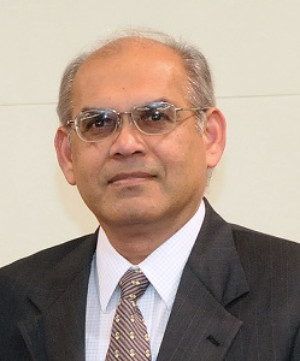Biomaterials for Tissue Engineering
A special issue of International Journal of Molecular Sciences (ISSN 1422-0067). This special issue belongs to the section "Materials Science".
Deadline for manuscript submissions: closed (31 October 2015) | Viewed by 247143
Special Issue Editor
2. Department of Bioengineering, University of Illinois at Chicago, Chicago, IL 60607, USA
Interests: bioceramics; bone regeneratio; calcium phosphate; drug delivery matrices; biomimetic ceramics; tissue engineering; biological interactions of calcium phosphates; osteoinduction
Special Issues, Collections and Topics in MDPI journals
Special Issue Information
Dear Colleagues,
The field of tissue engineering is advancing rapidly and many of these advances would not be possible without the innovative design and development of biomaterials. The intent of this Special Issue is to cover recent advances and emerging developments in the design and development of biomaterials for engineering a wide range of tissues and organs. The Special Issue will consider the main types of biomaterials, synthetic and natural, that are being investigated for tissue engineering applications, including biodegradable polymers, hydrogels, polypeptides, inorganic materials such as bioactive ceramics and glasses, and composites, as well as technologies for forming these biomaterials into tissue engineering constructs with nanofibrous, microfibrous and macroporous three-dimensional architectures. Biomaterials for stem cell-based therapies and for growth factor and drug delivery are also of interest. The use of biomaterials in engineered regeneration of specific tissues and organs such as bone, cartilage, tendons and ligaments, skin, soft tissue wounds, cardiac muscle, vascular tissues and neural tissues, as well as composite tissue structures such as joints and periodontal ligaments, and organs such as kidney, liver and pancreas will be covered. Issues in further advancing tissue-engineered products towards clinical applications in the restoration of diseased or damaged tissues and organs will be addressed.
Mohamed N. Rahaman
Guest Editor
Manuscript Submission Information
Manuscripts should be submitted online at www.mdpi.com by registering and logging in to this website. Once you are registered, click here to go to the submission form. Manuscripts can be submitted until the deadline. All submissions that pass pre-check are peer-reviewed. Accepted papers will be published continuously in the journal (as soon as accepted) and will be listed together on the special issue website. Research articles, review articles as well as short communications are invited. For planned papers, a title and short abstract (about 100 words) can be sent to the Editorial Office for announcement on this website.
Submitted manuscripts should not have been published previously, nor be under consideration for publication elsewhere (except conference proceedings papers). All manuscripts are thoroughly refereed through a single-blind peer-review process. A guide for authors and other relevant information for submission of manuscripts is available on the Instructions for Authors page. International Journal of Molecular Sciences is an international peer-reviewed open access semimonthly journal published by MDPI.
Please visit the Instructions for Authors page before submitting a manuscript. There is an Article Processing Charge (APC) for publication in this open access journal. For details about the APC please see here. Submitted papers should be well formatted and use good English. Authors may use MDPI's English editing service prior to publication or during author revisions.
Keywords
- biomaterials
- tissue engineering
- regenerative medicine
- scaffolds
- stem cells
- growth factors
- tissues and organs
Benefits of Publishing in a Special Issue
- Ease of navigation: Grouping papers by topic helps scholars navigate broad scope journals more efficiently.
- Greater discoverability: Special Issues support the reach and impact of scientific research. Articles in Special Issues are more discoverable and cited more frequently.
- Expansion of research network: Special Issues facilitate connections among authors, fostering scientific collaborations.
- External promotion: Articles in Special Issues are often promoted through the journal's social media, increasing their visibility.
- e-Book format: Special Issues with more than 10 articles can be published as dedicated e-books, ensuring wide and rapid dissemination.
Further information on MDPI's Special Issue policies can be found here.






